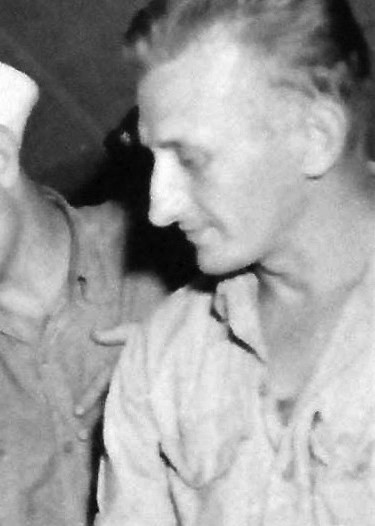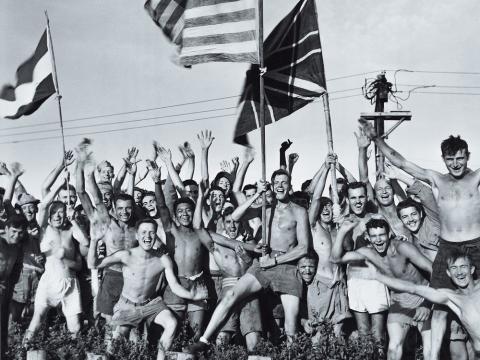JAKUBIELSKI-RAYMOND
RAYMOND JOSEPH JAKUBIELSKI

BMC/LT

HELD THREE YEARS THREE MONTHS
DURING WWII AS POW
Raymond Joseph Jakubielski was born May29, 1911, in Norwich, Connecticut, and reportedly served in the Navy from August 13, 1928, to September 1, 1950. Historical records report he served aboard the minesweepers USS Bittern and USS Tanger, both of which operated from Cavite Navy Yard in the Philippines prior to World War II. Both ships were destroyed in the early days of the war and Jakubielski then joined with troops fighting at Corregidor Island in Manila Bay. On May 6, 1942, the American forces were forced to surrender and Boatswain Mate First Class Jakubielski became a Japanese POW.
It is believed that Jakubielski was held at several POW camps before being confined at Omori POW Camp in Tokyo Bay, Japan. When American forces commenced attacks in the Tokyo area a small group of POWs, including Jakubielski, conspired together to construct a U.S. flag to welcome American forces as it was rumored that the Japanese were about to surrender. Secretly one of the group stole a Japanese sheet and the group initiated their efforts to produce a 4 by 6 foot flag using colored pencils they were able to secretly steal from the Japanese and others they obtained from Red Cross packages. The group of POWs persisted in their efforts in spite of knowing the Japanese prohibited them from having a U.S. flag and they would undoubtedly be executed if their flag was discovered. In addition, their superiors threatened them with court martial fearing all prisoners would be severely punished if the flag was discovered. The group succeeded in keeping the flag secret and it has been reported they flew the flag on a building roof on August 15, 1945, the day Japan surrendered. Thus, it was the first U.S. flag to fly over Tokyo.
On August 29, American ships appeared in Tokyo Bay and as the first American landing craft came close to Camp Omori as it was led by a torpedo bomber guiding it to the camp, pandemonium broke out on the camp pier as prisoners rushed to the water’s edge. Approaching the pier, a Navy photographer snapped a picture showing jubilant prisoners and he later wrote: “We finally spotted the moving figures on a pier jutting out to the bay. We came closer – they were screaming and yelling and waving their arms, their shirts, and an American flag. Some wore no clothing at all, some had G-strings, and others had on the remnants of what they were captured in, and a few had on new clothes that had been dropped by B-29s the last few days. Some started to swim for our boat and were told to go back. The others kept waving and shouting and we waved and shouted back, and tears came to my eyes.”
The photograph was widely published, and historians have searched the famous photo to establish identities. Only thirteen have been named which includes eleven Americans (US Army Air Force-6; USN-4, USMC-1) one from Holland, and one from South Africa. Although Jakubielski is not known to be in the photograph, the flag is held by EM1 James Dennis Landrum, one of the men who assisted in making it. Following their liberation, the flag was apparently retained by Jakubielski as on July 8, 1973, his family during a ceremony presented the flag to the Navy at the Submarine Base in Norwich, Connecticut, so it could be preserved for posterity. Subsequent to the gifting the iconic flag was flown over the U.S. Capital in tribute and is now being preserved in custody of the Naval History and Heritage Command.
Omori POW Camp, Tokyo Bay, Japan - 8/29/1945
Omori Flag in custody of Naval History and Herritage Command
Jakubielski died December 27, 1971. He is buried at Saint Joseph Cemetery in Norwich, Connecticut, where his grave marker carries the inscription: LIEUTENANT - US NAVY - WORLD WAR II.
Submitted by CDR Roy A. Mosteller, USNR (Ret)



